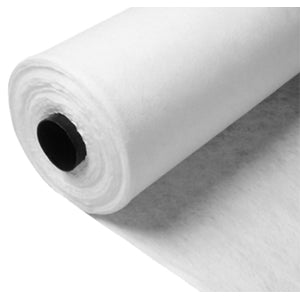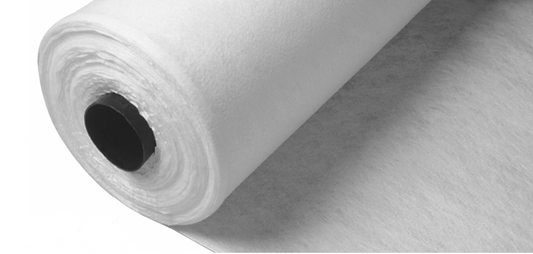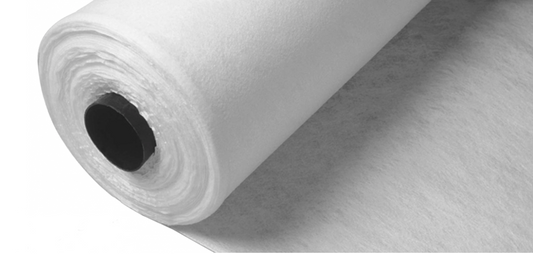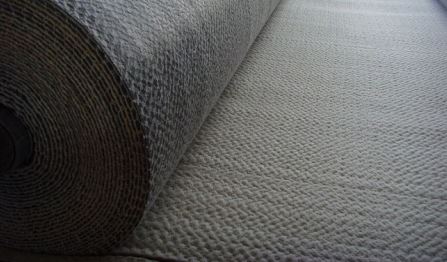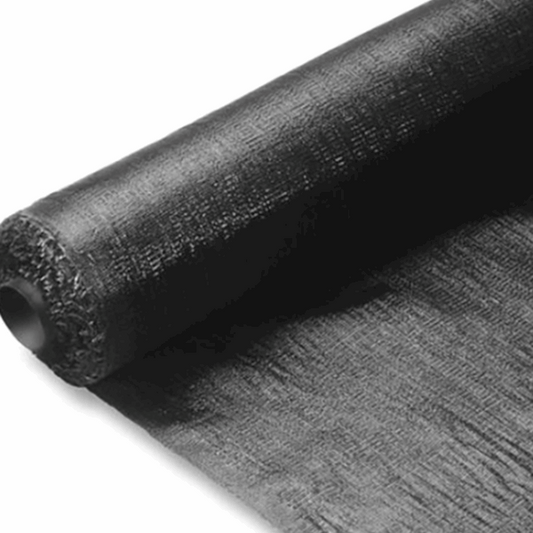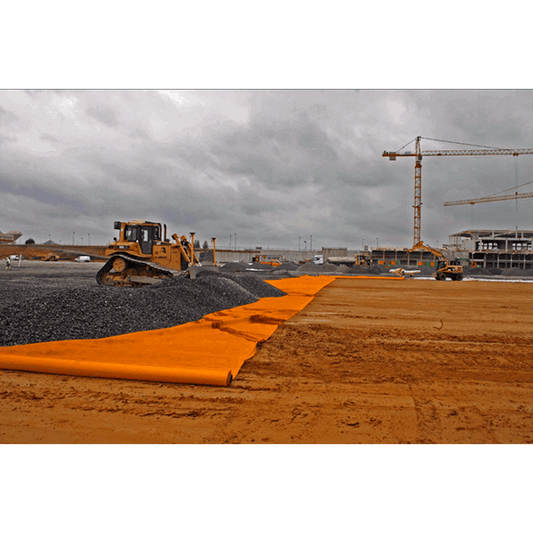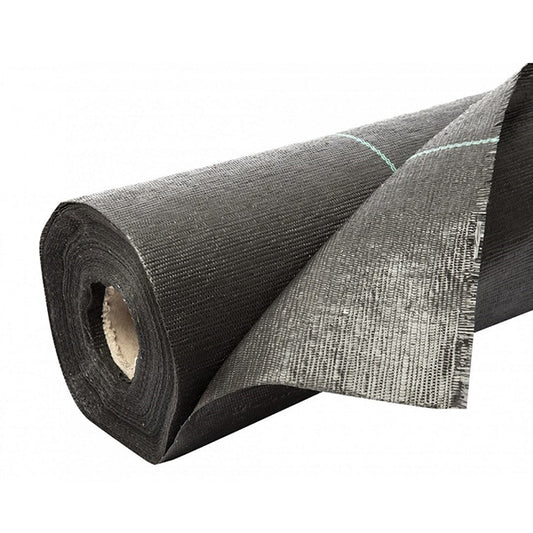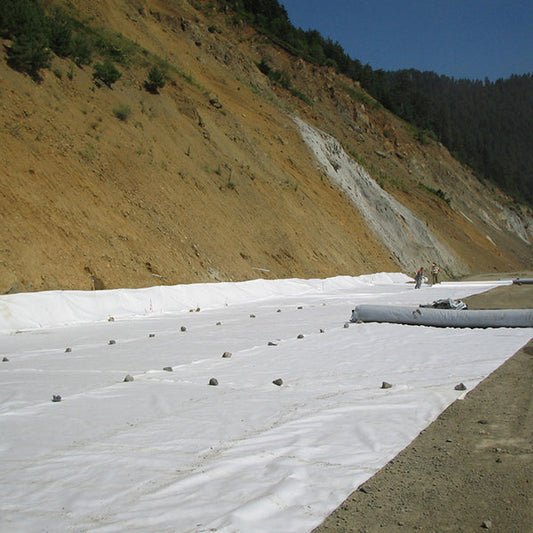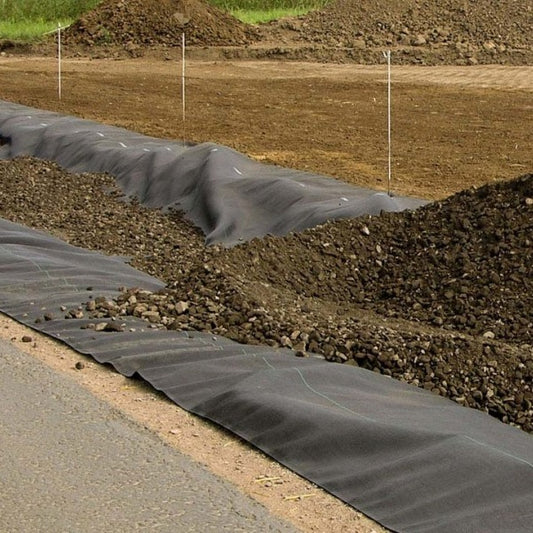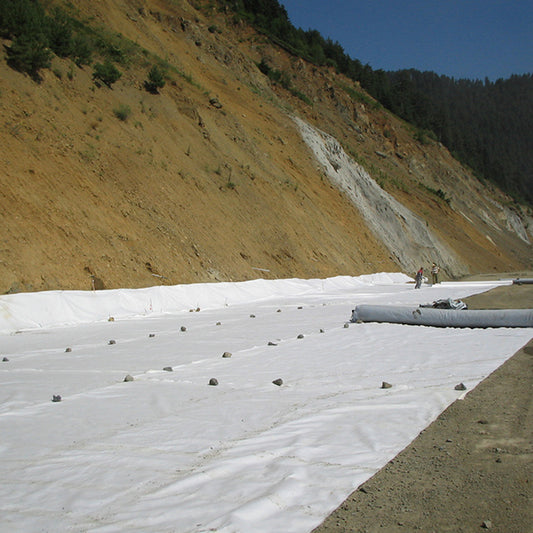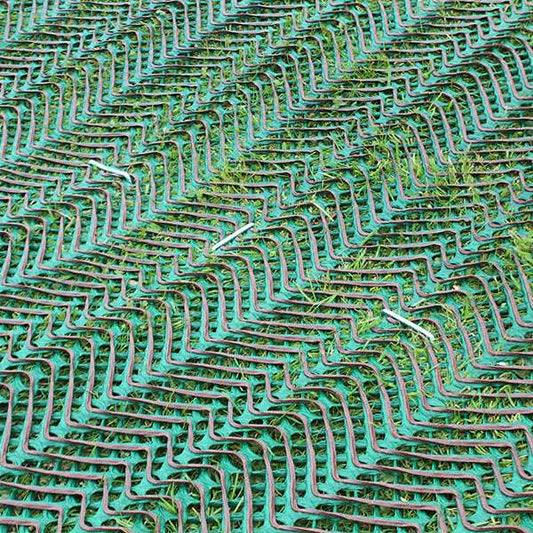Geotextile membranes are widely used across today’s construction, civil engineering, and agricultural sites. They’re most commonly used for erosion control, soil stability, or drainage. These versatile materials help separate soil layers, provide reinforcement, and are also used in equestrian arenas and stormwater attenuation systems.
With so many options available, you may be wondering — what’s the difference between woven and non-woven geotextile membranes? And how do you choose the right one for your project?
Contents
Woven geotextile membranes
Woven geotextiles are made from woven slit-film polypropylene materials. This type of fabric is created from two sets of parallel threads or yarns, combining high tensile strength with low permeability — ideal for bridging wet or unstable soil layers.
Main Characteristics:
- Reinforcement
- Separation
- High load capacity
- Low permeability
- Classified by tensile strength
- Plastic-like texture
Typical applications for woven geotextile membranes include driveways, car parks, residential roads, and motorways. They are particularly effective when installed over weak or wet soil, providing both separation and long-term stabilisation. When correctly specified and installed, woven geotextiles enhance performance, reduce maintenance costs, and extend the lifespan of the project.
Woven geotextile membranes are also used around underground stormwater attenuation tanks where large volumes of water are stored before being discharged into a watercourse, rather than seeping into the ground.
Non-woven geotextile membranes
Non-woven geotextile membranes are made from needle-punched polypropylene. This structure allows for simultaneous separation and filtration. These fabrics combine durability with high permeability, making them suitable for applications where both drainage and filtration are needed.
Main Characteristics:
- Filtration
- Separation
- Drainage
- Permeable
- Classified by weight
- Felt-like texture
Thanks to their permeability, non-woven geotextiles are ideal for use with soakaway crates, drainage systems, and sub-surface applications where water needs to pass through the material. They’re less suitable for reinforcement but excellent for protection, filtration, and separation.
The Differences
Choosing the right geotextile depends on understanding how they differ. Generally, woven geotextiles provide higher tensile strength, while non-woven geotextiles offer higher permeability and flow rates.
Manufacturing process
Woven geotextiles are produced using weaving techniques, while non-woven geotextiles are manufactured by bonding fibres together mechanically, thermally, or chemically.
Physical attributes
Woven geotextiles have a plastic-like texture and appearance, while non-woven geotextiles have a soft, felt-like texture.
Permeability
Woven geotextiles are generally impermeable, while non-woven geotextiles are permeable, allowing water to pass through.
Classification
Woven geotextiles are classified by tensile strength, while non-woven geotextiles are classified by weight.
Strength
Woven geotextiles are woven using cross-thread patterns that create strong reinforcement, making them more durable than non-woven geotextiles.
Cost
Non-woven geotextiles are generally more affordable as they are quicker to produce, while woven fabrics are costlier due to their complex weaving process.
How can we help you?
At Cotterill Civils, we supply both woven and non-woven geotextiles. Our experts can help you choose the best solution for your project — whether for soil stabilisation, filtration, or drainage applications.
Call us on 0121 351 3230 or visit our website today for tailored advice.
Alternatively, fill out our enquiry form:






